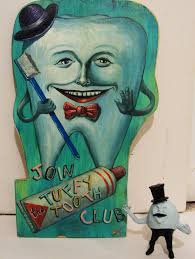Munch, munch, munch ouch! Not another cavity!
This is Sandra Tsing Loh with the Loh Down on Science.
Cavities are a pain. To slow their formation, we add fluoride to toothpaste. But fluoride doesn’t help with cavities once they form. What if something else could?
Researchers at the University of Washington sunk their teeth into the problem. The team mixed cavity-laden teeth in a solution of either fluoride or peptide.Unlike fluoride, which is a singular atom, peptides are chains of amino acids.
Then they soaked the teeth in a solution of calcium and phosphate. Your body uses both compounds to make enamel. They examined both sets of teeth under microscopes to see if enamel reformed.
Who did the better job – fluoride or peptide?
Turns out peptide chains surpassed fluoride in replacing enamel and repairing cavities! Think of calcium and phosphate as bricks, and peptide as a bricklayer. Peptide lays a sturdy foundation that builds enamel. Fluoride, on the other hand, helps lay bricks but doesn’t cement them together.
Researchers envision adding this peptide to commercial mouthwash and toothpaste.

